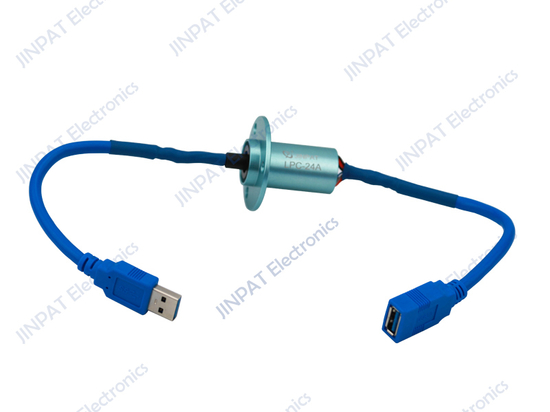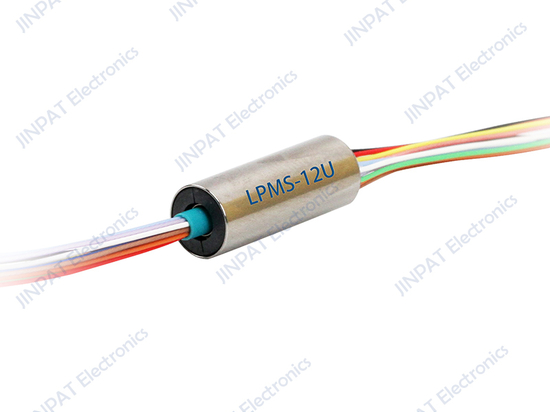
#Product Trends
Technical details of robot customized slip ring
Technical details of robot customized slip ring
After observation, we found that RoboMaster teams still have a large demand for customized slip rings. Therefore, here we will introduce in detail the customized technical details of the hollow shaft and capsule slip ring.
First, let's take a look at customizing the hollow shaft slip ring signal. Due to the limitations of technical characteristics, there is a signal that cannot be transmitted in a hollow shaft slip ring, namely the USB3.0 signal. Currently, only the capsule slip rings can integrate USB3.0 signals. However, the hollow shaft slip ring can support the transmission of USB 2.0 signals. According to the product case provided by JINPAT for the participating robots, the maximum required hollow shaft slip ring for each team at present is 60mm. At this aperture, USB2.0 signals can also be transmitted.
Due to different technical routes adopted by teams, some robot designs require support for the transmission of high-speed signals, while also integrating some ordinary signal paths, and usually require 6-12 10A power lines for power supply. When the aperture of the selected slip ring reaches a certain size, integrating so many paths will inevitably make the height of the slip ring very high. Therefore, adding high-speed signal paths often does not pay off.
If this kind of scheme cannot be abandoned, in terms of increasing the height of the slip ring, integrating Gigabit Ethernet into a through-hole slip ring is the most cost-effective choice, because it occupies the least internal loop of all high-speed signals. The product information of the slip ring industry is already very transparent. Unless cutting corners, the product heights provided by various manufacturers are basically the same, so each team needs to consider the trade-offs of signal paths in advance when designing.
In the slip rings of Hero Robots or Sentinel Robots, the most frequently used signal is still CAN-BUS signal because it is also a differential signal, some people prefer to use differential CAN to express signals. Since JINPAT has a huge annual output of engineering machinery, the annual usage of CAN signals is also very large. In general, when customers require differential signals, they will not use CAN signal lines, but ordinary twisted pair or shielded twisted pair. Therefore, when customizing the slip ring signal for competition robots, it is necessary to say CAN signal, not differential CAN signal, in communication between customers and manufacturers, otherwise, the engineer will integrate 1 route of CAN signal and add 1 route of differential signal to the product.





